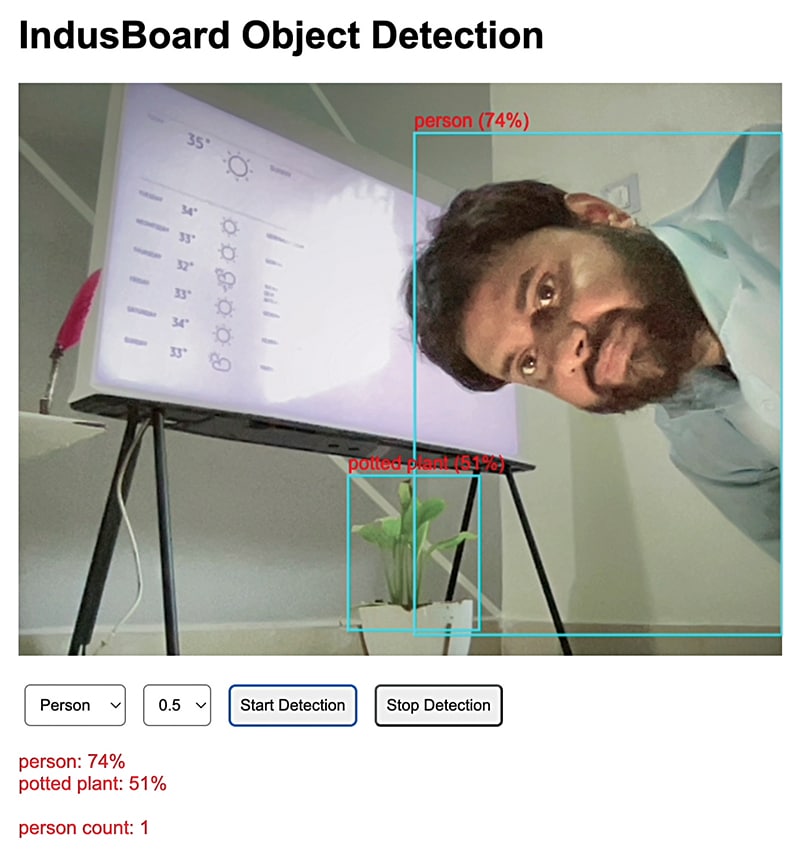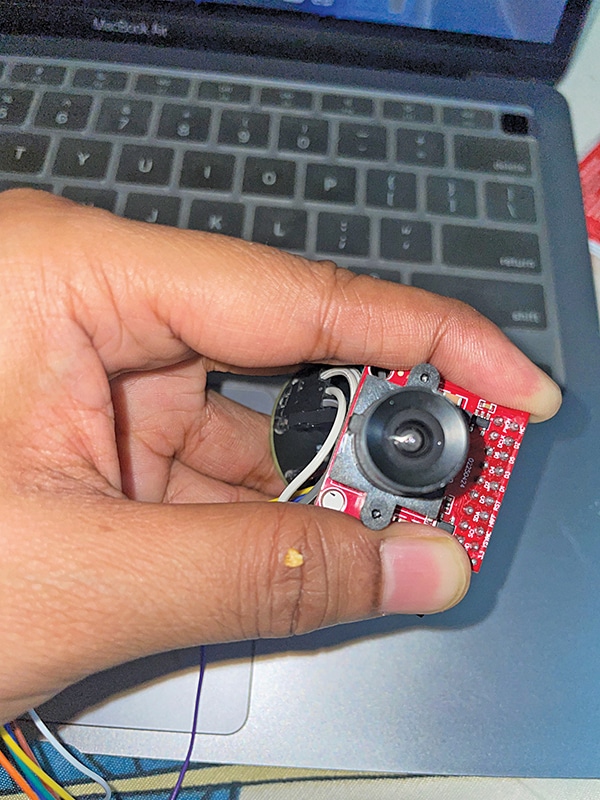
AI cameras are everywhere—spotting people, detecting objects, and powering advanced driver assistance systems in cars. But most are too bulky and power-hungry for compact applications like drones, wearables, or wildlife tracking.
This device demonstrates how machine learning can be embedded into a tiny package—perfect for places where size, power, and real-time intelligence matter.
By using TensorFlow.js with the COCO-SSD model, the camera identifies people, vehicles, and animals directly within a browser, combining intelligent software with minimal hardware. This serves as the foundation for designing one of the smallest AI streaming cameras.
Fig. 1 shows the author detecting a person and a potted plant during testing.

| Bill of Materials | ||
| Item | Remarks | Quantity |
| IndusBoard Coin V2 | Tiny board | 1 |
| OV2640 camera module | 2MP camera with JPEG output | 1 |
| Jumper wires | For hooking it all up | 15 |
| Power supply | 3.3V battery or USB adaptor | 1 |
| Micro USB cable | For programming and power | 1 |
Why go small?
Compact AI cameras offer clear advantages across diverse sectors.
In drones, they lower payload while supporting obstacle detection and object tracking. In wearables, they integrate discreetly into glasses or badges to deliver real-time visual feedback. In home security, they enable unobtrusive surveillance. For wildlife monitoring, their size allows placement in tight or concealed spots such as birdhouses. In robotics, they serve as visual inputs for navigating constrained environments.
These use cases require devices that are intelligent, low-power, and exceptionally compact. A development board meeting all three criteria—capable of capturing frames, streaming video, and maintaining a minimal footprint—was essential.
The IndusBoard Coin V2, just 3.3cm across (approximately coin-sized), was chosen for its compact design and built-in sensors. The Bill of Materials table lists the components used; Fig. 2 shows the assembled prototype.

Circuit Diagram
Fig. 3 illustrates the wiring between the IndusBoard Coin and the OV2640 camera module. Key GPIO pin connections include:
XCLK (GPIO 44): Supplies a 20MHz clock signal
PCLK (GPIO 39): Synchronises pixel data
VSYNC (GPIO 21): Indicates the start of a new frame
HREF (GPIO 1): Denotes the beginning of each line
Y2 to Y9 (GPIOs 7, 3, 10, 4, 42, 5, 41, 6): Carry 8-bit pixel data
SDA (GPIO 8) and SCL (GPIO 9): I²C communication lines for camera setup
RESET (GPIO 2): Resets the camera module when required
Oops! This is an EFY++ article, which means it's our Premium Content. You need to be a Registered User of our website to read its complete content.
Good News: You can register to our website for FREE! CLICK HERE to register now.
Already a registered member? If YES, then simply login to you account below. (TIP: Use 'forgot password' feature and reset and save your new password in your browser, if you forgot the last one!)









